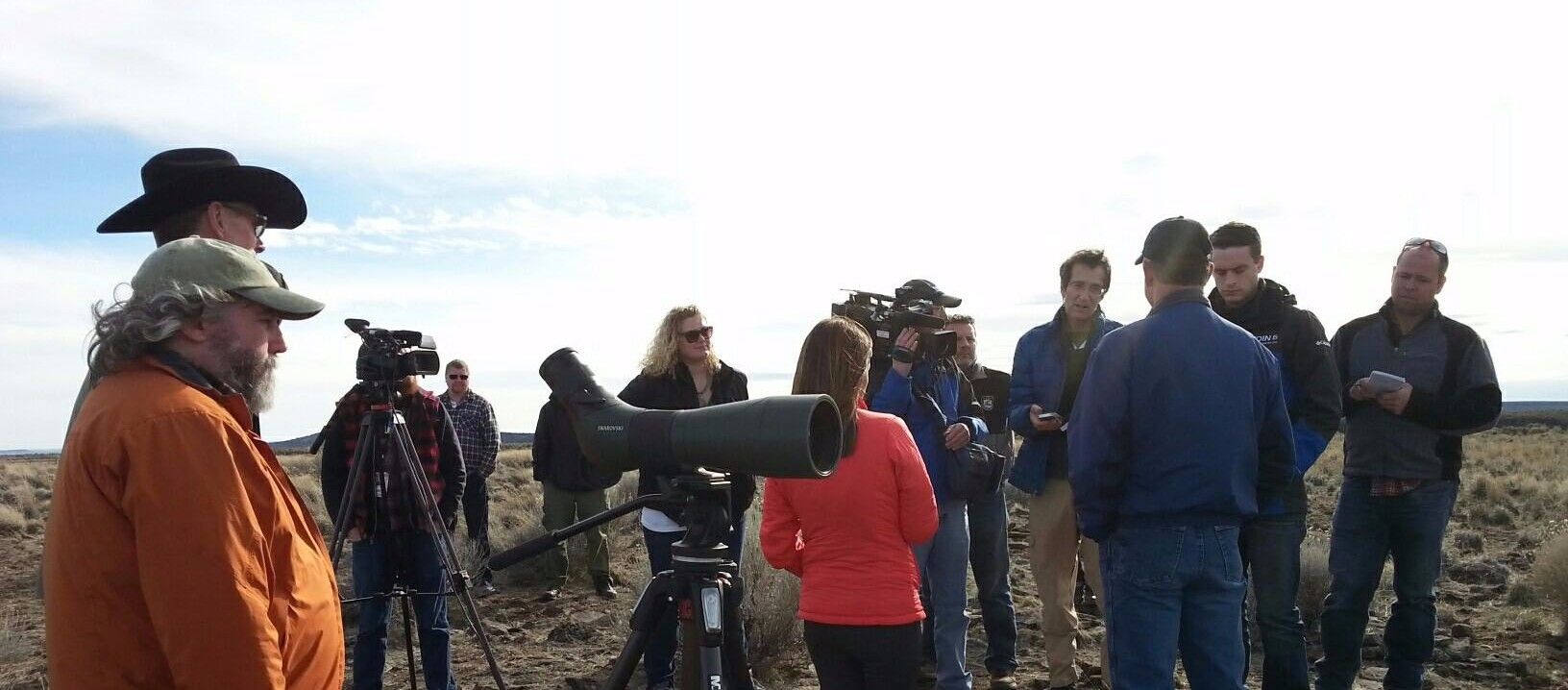Spring in Eastern Oregon means the wildflowers are blooming and the sagebrush is greening up. As the snow melts out of the hills, the creeks have delivered rushing torrents causing historic flooding followed by the somber work of clean up and recovery. Calving season is in full swing, ranchers navigate both their livestock needs and flood damaged infrastructure to tend to and there’s deadfall from winter that needs to be cut out.
As flood recovery continues, spring in Eastern Oregon also means finalizing the ongoing preparations for the upcoming wildfire season. Erring on the side of caution, land managers, fire officials and community members are planning ways to mitigate damages from what could be another challenging summer. A combination of above-average snowpack, carryover of fine fuels, and the ongoing impacts of federal workforce reductions have set the stage for a potentially active fire year. From rural volunteer forces to federal agencies, preparations are underway.
According to Don Rotell, District Manager for the Bureau of Land Management’s Burns District, the outlook is a familiar one.
“So far, conditions are tracking very similar to 2024,” he noted, referencing the “abundant snowpack” and high potential for grass growth on rangelands. That moisture, while welcome, can be both a blessing and a curse: more moisture in the ecosystem leads to lush growth and less dry fuels, but less dry fuels, but as summer drags on and temperatures skyrocket, that new growth can transform into highly flammable fuels.
Snowpack across much of Oregon has remained above normal, especially in the southeastern corner. This may prolong the greening period, but it also sets up prime conditions for fine fuel accumulation. As with 2024’s fire season—which scorched over 200,000 acres in Harney County alone—dry lightning remains the wild card, sparking large fires even in areas that appear well-prepared.
Readiness on the Ground
BLM’s preparations include onboarding seasonal firefighting personnel, coordinating preseason training, updating fire management plans, and working with local Rangeland Fire Protection Associations (RFPAs) to finalize operational agreements. Trucks and equipment are being de-winterized and inspected, and mechanical fuel treatments are ongoing in key areas like Diamond and Frenchglen, with continued thinning of juniper and application of herbicides to manage invasive grasses.
“RFPA partnerships are more important now than ever before,” Rotell said. The BLM recently hosted an RFPA summit to strengthen those ties ahead of July 1, a date many area officials consider the season kickoff.
One of those key partners is the Frenchglen RFPA. Mike Fox, the Frenchglen RFPA secretary, reports that the group has recently upgraded equipment and trained on the use of new fire shelters and fittings for water tenders. While their only call in 2024 was a single-day deployment to the Solomon Fire, Fox says they’re ready for more.
“We’ve had a lot of moisture in south Harney County this year, so we’ll have a lot of vegetation and fuels,” he noted. “The big question is ignition, as usual.”
Fox emphasized that lightning remains the dominant driver of fire starts in the region, though human-caused fires—often the result of carelessness—continue to pose a risk.
"I don’t think any of us will be playing with fireworks," he added.
Workforce Cuts and Uncertain Support
One of the most pressing concerns across agencies is the impact of recent federal workforce reductions. While direct firefighting roles appear largely untouched, support staff—including resource advisors, warehouse coordinators, and logistics personnel—may be in shorter supply. These roles, though often behind the scenes, are vital to the seamless functioning of extended fire operations.
Jeff Rose, who retired from the BLM in 2024 after decades of service, pointed out that the people lost to workforce cuts aren’t just “cubicle dwellers.”
“It’s your procurement officer, your camp manager—folks that make sure the supplies show up on time,” Rose explained. “If you don’t have them, someone has to be pulled off the fireline to do those jobs. That’s when things get tricky.”
Workforce shortages across the West are impacting everything from initial response times to long-term recovery efforts. While federal agencies have pledged to prioritize firefighting capabilities, ripple effects from staffing cuts may not be fully realized until peak season hits.
Middle Management Gap
A recurring theme among fire professionals is the persistent gap in middle management, (those that have National Wildfire Coordinating Group qualifications)—a problem that’s only grown over the years. These mid-level leaders are essential for overseeing crews, coordinating strategy, and keeping operations fluid and safe. “They’re critical,” Rotell said, “but it’s been a hard position to fill for years.”
Both public and private entities are feeling this pinch. Agencies like Grayback Forestry, which provides contracted firefighting crews, have noted similar struggles. Without enough experienced supervisors, crews may lack the oversight necessary for complex or large-scale assignments.
Resilience and Realism
Despite these concerns, fire professionals remain focused on readiness and resilience. Rose, who spent more than three decades managing land and fire programs in Eastern Oregon, offered a grounded perspective.
“Folks need to remember—it’s nature, and it’s not always predictable.”
That sentiment—clear-eyed but committed—echoes through every level of preparation across the region. Whether the 2025 fire season mirrors the destruction of 2024 or not, those entrusted with protecting Eastern Oregon’s people and landscapes are doing everything they can to be ready. Including continuing to work together through the Harney County Wildfire Collaborative and the Harney County Forest Restoration Collaborative where all come together to discuss wildfire resilience for both the range and forest.
“We will have fires, and the federal folks, the state folks, the city folks, and the RFPAs—they’re still going to be here,” Rose said.
“They’re going to do the best job they can with whatever they’ve got.”

